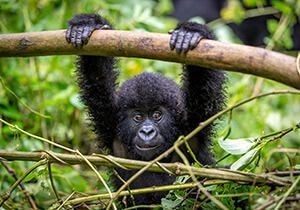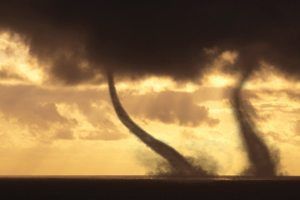
The Invention of the Aeroplane Primary Resource
Find out about the key events in the history of the aeroplane
This primary resource explores the events which led to the invention of the aeroplane in a fun comic book format. Who built the first flying aeroplane? How did it work? When was the first trans-Atlantic flight?
Pupils will learn about the key events in the history of the aeroplane — from humanity’s first attempts at building a flying machine to today’s large-scale passenger planes — in our National Geographic Kids primary resource sheet
The teaching resource can be used in study group tasks for discussing man-made inventions, feats of engineering and key concepts of physics. It could be used as a printed handout for each pupil to review and annotate, or for display on the interactive whiteboard for class discussion.
Activity: Ask children to use the comic to make an illustrated timeline of the history on the aeroplane, stretching from Leonardo Da Vinci’s paper designs to the Virgin Galactic project. They could also draw a diagram of their own aeroplane design or an ‘aeroplane of the future’ as a fun activity. Ask them to annotate their diagram, explaining the different sections of the aeroplane: what it’s made of; how it would work; how fast it could travel;where it would travel to, etc.
N.B. The following information for mapping the resource documents to the school curriculum is specifically tailored to the English National Curriculum and Scottish Curriculum for Excellence. We are currently working to bring specifically tailored curriculum resource links for our other territories; including South Africa, Australia and New Zealand. If you have any queries about our upcoming curriculum resource links, please email: schools@ngkids.co.uk
This primary resource assists with teaching the following Science objectives from the National Curriculum:
- Develop scientific knowledge and conceptual understanding through the specific disciplines of biology, chemistry and physics
- Develop understanding of the nature, processes and methods of science through different types of science enquiries that help them to answer scientific questions about the world around them
- are equipped with the scientific knowledge required to understand the uses and implications of science, today and for the future.
National Curriculum Key Stage 2 Science objectives:
- Identify the effects of air resistance, water resistance and friction, that act between moving surfaces
- Recognise that some mechanisms, including levers, pulleys and gears, allow a smaller force to have a greater effect
This primary resource assists with teaching the following History objectives from the National Curriculum:
- Know and understand the history of these islands as a coherent, chronological narrative, from the earliest times to the present day: how people’s lives have shaped this nation and how Britain has influenced and been influenced by the wider world
- Gain historical perspective by placing their growing knowledge into different contexts, understanding the connections between local, regional, national and international history; between cultural, economic, military, political, religious and social history; and between short- and long-term timescales
Key Stage 1 History Objectives:
- Events beyond living memory that are significant nationally or globally [for example, the Great Fire of London, the first aeroplane flight or events commemorated through festivals or anniversaries
- The lives of significant individuals in the past who have contributed to national and international achievements
This primary resource assists with teaching the following Design and Technology Key stage 1 objectives from the National Curriculum:
- Generate, develop, model and communicate their ideas through talking, drawing, templates, mock-ups and, where appropriate, information and communication technology
Design and Technology Key stage 2 Design and Technology objectives from the National Curriculum:
- Generate, develop, model and communicate their ideas through discussion, annotated sketches, cross-sectional and exploded diagrams, prototypes, pattern pieces and computer-aided design
- Understand how key events and individuals in design and technology have shape the world
This primary resource assists with teaching the following Expressive Arts Early level objectives from the Scottish Curriculum for Excellence:
-
I have the freedom to discover and choose ways to create images and objects using a variety of materials
Expressive Arts First level objectives from the Scottish Curriculum for Excellence:
- Inspired by a range of stimuli, I can express and communicate my ideas, thoughts and feelings through activities within art and design
- I have the opportunity to choose and explore a range of media and technologies to create images and objects, discovering their effects and suitability for specific tasks
- I can create and present work using the visual elements of line, shape, form, colour, tone, pattern and texture
-
I can use exploration and imagination to solve design problems related to real-life situations
Expressive Arts Second level objectives from the Scottish Curriculum for Excellence:
- I can create and present work that shows developing skill in using the visual elements and concepts
-
Through observing and recording from my experiences across the curriculum, I can create images and objects which show my awareness and recognition of detail
Expressive Arts Third level objectives from the Scottish Curriculum for Excellence:
- I can use and combine the visual elements and concepts to convey ideas, thoughts and feelings in expressive and design work.
-
While working through a design process in response to a design brief, I can develop and communicate imaginative design solutions.
Expressive Arts Fourth level objectives from the Scottish Curriculum for Excellence:
- I can use my skills and creativity to generate original ideas in my expressive and design work
This primary resource assists with teaching the following Social Studies Second level objective from the Scottish Curriculum for Excellence:
- I can discuss why people and events from a particular time in the past were important, placing them within a historical sequence
This primary resource assists with teaching the following Technologies First level objective from the Scottish Curriculum for Excellence:
- I can explore the latest technologies and consider the ways in which they have developed
- I explore and discover engineering disciplines and can create solutions
Technologies Second level objective from the Scottish Curriculum for Excellence:
- I can investigate how product design and development have been influenced by changing lifestyles
Technologies Third level objective from the Scottish Curriculum for Excellence:
- I understand how scientific and technological developments have contributed to changes in everyday products
Download primary resource
Note: This is a subscriber-only benefit. If you have an active subscription, please log into your online account to download the files.
More Like

20 hilarious Halloween jokes for kids

10 top cheetah facts!

10 great gorilla facts!











LEAVE A COMMENT
THANK YOU
Your comment will be checked and approved shortly.
WELL DONE,
YOUR COMMENT
HAS BEEN ADDED!
COMMENTS1
CUSTOMIZE YOUR AVATAR